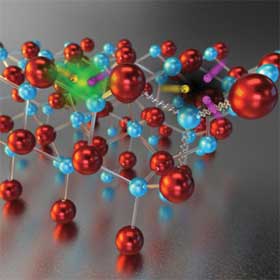Compiled by Photonics Spectra staff
Nitride-based LEDs are efficient, nontoxic and long-lasting, but they are considered impractical for general lighting because of a drop in efficiency when operating at high power.
And now we know why this happens.
Researchers at the University of California investigated the drop
in efficiency, known as “droop,” by performing quantum mechanical calculations.
They said the LED droop can be attributed to Auger recombination, a process that
occurs in semiconductors in which three charge carriers interact without giving off
light.

LED droop. Courtesy of UC Santa Barbara Engineering.
They also discovered that indirect Auger effects, which involve
a scattering mechanism, account for the discrepancy between the observed degree
of droop and that predicted by other theoretical studies, which only accounted for
direct Auger processes.
In nitride LEDs, “these indirect processes form the dominant
contribution to the Auger recombination rate,” said Emmanouil Kioupakis, a
postdoctoral researcher at UCSB.
Now that Auger recombination has been established as the root
of the problem, the scientists say they can focus on creative approaches to suppressing
or circumventing the loss mechanism. LED droop can’t be eliminated because
Auger effects are intrinsic, but it could be minimized, Kioupakis said, by using
thicker quantum wells in LEDs or growing devices along nonpolar or semipolar directions
to keep carrier density low.
The research appeared online April 19, 2011, in Applied Physics
Letters (doi: 10.1063/1.3570656).